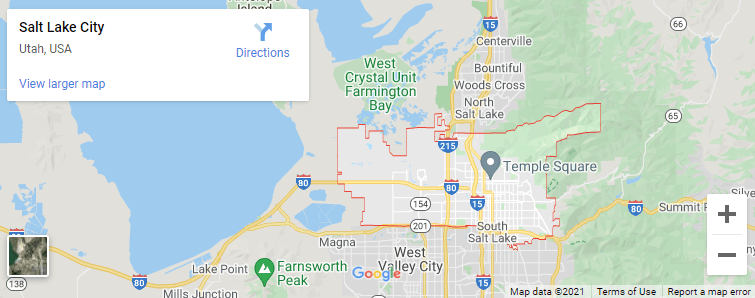Contents (Click To Jump)
- 1 What Are the Most Common Tree Issues in Salt Lake City?
- 2 Does Salt Lake City Provide Any Assistance in Tree Removal Problems?
- 3 Who Is Responsible for Fallen Tree Removal in Salt Lake City?
- 4 How Does the Soil Affect Trees in Salt Lake City?
- 5 Does Weather Affect Tree Health in Salt Lake City?
- 6 What if Dead Trees Are Near Power Lines in Salt Lake City?
- 7 How Much Does Tree Removal Usually Cost in Salt Lake City?
What Are the Most Common Tree Issues in Salt Lake City?
There is a variety of circumstances that affect our trees in Salt Lake City. Some are more common than others. A lot of things can make our trees ill and, in some instances, cause them to die off. Here are some of the more common tree issues the trees in Salt Lake City face.
Wounds and Decay
CODIT, or the Compartmentalization of Decay in Trees, is the reaction a tree takes when it is wounded. According to the Utah State University’s Forestry Extension, a wounded tree develops defense walls to ward of fungi and microorganisms. A callus layer is formed around the wound to close it, much like a scab. Small wounds may heal quickly; larger ones can take years to heal if they do at all.
Trees are susceptible to wounds just like people and animals. Potential injuring agents include lawnmowers and other yard equipment that can cut into the bark and the vascular tissue that lies just beneath. This can cause decay and ultimately kill off a tree.
Care should be given whenever you need to dig near a tree. Roots can easily be cut by a shovel, and trenching will tear up the roots even more. Either can leave large gaping wounds in the roots and may prevent new ones from growing.
Pests and Disease
Probably the largest issue Salt Lake City trees must deal with is that of pests and disease. Either can affect our native trees, as well as others we try to grow here. According to Salt Lake City’s Urban Forestry Department, some of our native trees include:
- Ponderosa Pine
- Narrowleaf Cottonwood
- Fremont Cottonwood
- Aspen
- Douglas Fir
Other trees we often use in landscaping include:
- Green Ash
- Box Elders
- Limber Pine
- Lodgepole Pine
- Gamble Oak
- Siberian Pine
- Norway Maple
- Scots Pine
Some common pests that affect these species include:
Aphids
There are more than 400 different species of aphids, and they cause problems for almost any living plant or tree. Symptoms include curled and discolored leaves, and the excrement of “honeydew” sap which can be damaging to most anything it drips onto. While they can be found in almost any tree, among those listed above, aphids seem to affect green ash, box elders, cottonwoods, and Norway maples more than pine trees.
Lilac Ash Borer
As the name implies, this boring insect is often found in lilac and ash trees. A type of moth that resembles a wasp, the female can lay up to 400 eggs. Signs of these insects include loose bark, weakened and dying limbs, and round exit holes. They will also infect cottonwoods.
Poplar Bud Gall Mite
These microscopic devils are flightless, but travel on the wind, birds, and other insects. They affect aspens, cottonwoods, and poplar trees. Signs of poplar bud gall mites are the cauliflower-like swellings in the leaf buds.
Mountain Pine Beetle
This common bark beetle can be found in western North America and can cause devastating effects to a variety of conifers including the ponderosa pine, lodgepole pine, and other pines. They can be found anywhere from sea level to 11,000 feet and have been especially destructive in recent years, according to the National Park Service. These beetles make large entry points in the tree trunk. Other signs include large collections of sap and discolored needles. While the park service is trying methods of mitigation against the mountain pine beetle, it is difficult to control, especially in the backcountry.
IPS Beetle
Also known as the engraver beetle, these crawling insects carve their way into the bark of almost any conifer. Infestation can kill a lot of trees within any given area. Symptoms are like those of the mountain pine beetle, although the holes they dig into the bark are smaller. They also cause discoloration to the branches of infected trees. They infect lodgepoles, limber, ponderosa, and other pines.
Pine Needle Scale
This needle scale insect grabs hold to the needles of scots pine and mugo pine as well as other spruce and fir trees. The insect produces a hard, waxy shell visible to the naked eye. Close examination will reveal many circular-shaped insects on the needles which appear silvery from further away.
Common fungus and diseases include:
Aspen Leaf Spot
Aspen leaf spot is a fungus that can often be misidentified as an iron deficiency. The symptoms include black spots on the leaves with yellowing surrounding those spots. This disease seems to be limited to aspen trees.
Leaf Scorch
This disease is caused by a lack of water being able to reach the top of the trees. We see it more in hot, windy weather and during droughts. The major signs of leaf scorch are the burnt-looking leaves. This disease affects ash, elm, maple, poplars, and chestnut trees.
Does Salt Lake City Provide Any Assistance in Tree Removal Problems?
Salt Lake City staff is happy to assist in any way they can with urban forest and tree advice, as well as addressing potential issues for removal. The City, however, considers tree removal a last resort. Besides trees that have already fallen, the city will only condone tree removal for:
- Possible public safety hazards,
- When a tree poses a safety problem for use of that property,
- The overall health of the urban forest
As a property owner, you have a right to remove a tree from your property. However, you cannot remove a street tree that is owned by the city. While you are responsible for watering street trees adjacent to your property, the city’s Urban Forestry Program is otherwise responsible for the maintenance of the trees including pruning, hazard assessment, health evaluation, possible removal, stump grinding, and storm cleanup and pickup. If you wish to have work done on a street tree, you need to apply for a permit.
Who Is Responsible for Fallen Tree Removal in Salt Lake City?
Trees that have fallen either through disease-related issues or a storm need to be removed for health and safety reasons. Just whose responsibility it is to have that done can vary from one situation to another.
If you’re a homeowner?
A homeowner is responsible for the removal of any fallen trees on their own property.
If you’re a renter?
Renters are not responsible for removing a fallen tree but should notify their landlord of the situation when it arises.
If you’re a landlord?
The property owner, or landlord, is responsible for having fallen trees removed from any property they own.
If you’re a neighbor?
Anyone who owns the land on which a tree is living is responsible for that tree. If that tree falls onto a neighboring property, they bear the responsibility to have it removed. There are situations when a long-lived tree was on the fence line between two properties. Regardless of whose property the tree falls on, the neighbors should jointly chip in to take care of its removal.
How Does the Soil Affect Trees in Salt Lake City?
Most of the soil in Utah is called mivida. This sandy loam has a sand base with small amounts of silt and clay mixed in. Generally, mivida soil is seen at about the 5,000-foot-level, but much of Salt Lake City soil is similar in content and also designated as sandy loam. This is good soil for trees and plants, as it retains moisture and nutrients.
Does Weather Affect Tree Health in Salt Lake City?
Many of us have chosen to live here, partly because of the weather and just to be close to the ski slopes. Salt Lake City sees some type of precipitation about 91 days per year. On average, we get between 53-54 inches of snow each year and close to 20 inches of rain. The temperatures are mild, dipping into the 20s on a cold winter’s night and reaching the high 80s and low 90s some days during the summer.
Our native trees and those common ones we choose to use in landscaping all do well in our weather. But, on occasion, we see severe weather that can cause havoc to our daily lives and trees as well.
In early September 2020, Utah had to declare a state of emergency following an unusually high windstorm with gusts of up to 100 mph. That storm knocked down about a thousand public trees and a similar number of private trees in the city.
What if Dead Trees Are Near Power Lines in Salt Lake City?
While that storm of 2020 was highly unusual, dead trees can sometimes come down around power lines, not only during a storm but also any other day. This can be dangerous. Rocky Mountain Power recommends you stay at least 30 feet away from a tree with downed power lines.
You should first call 911 and then call the power company at 1-888-221-7070. For city-owned trees, you should also notify city officials at 801-972-7818.
How Much Does Tree Removal Usually Cost in Salt Lake City?
As you can imagine, there are a lot of variables when it comes to pricing tree removal. At a minimum, it will cost $200, but it could also run over $1,000. Here are some factors:
Tree Size
The main cost difference for tree removal revolves around the size of the tree. A taller tree will cost more to remove than a shorter one. Very tall trees need special equipment including a bucket truck for removal, which adds to the equipment cost. Removing a 12-ft Utah juniper will be a lot less expensive than removing an 80-ft ponderosa pine.
Location of the Tree
Part of the estimated cost of removing a tree involves its location. If the tree is in the center of the yard and has easy access, it will be a straightforward job for our specialists. But if the tree is up against the house, you can expect the price to go up. Our crew then has to work around the house, avoiding having heavy branches fall onto the roof or hitting any windows.
Other considerations include power lines above and water or gas pipelines below ground. Each involves more consideration, and in the case of underground pipelines, you will have to contact the utility company to come out and mark the lines before the tree service can do their work.
Stump Removal
If you want the stump taken out and removed as well, there will be an additional cost. You can expect to pay about $2 per inch of diameter of the stump. Some choose to leave the stump and have chemicals applied that will help the stump decompose over time.






